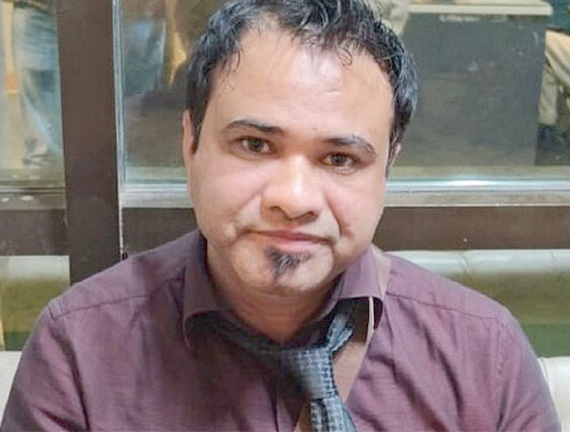
.png) Joseph Maliakan
Joseph Maliakan

At a time when protection of civil liberties in different parts of the country has become a grave concern because of the high-handed behaviour of the police and other law-enforcing agencies, several high courts in the country have come to the rescue of the affected groups and individuals.
In a very significant order, the Delhi High Court on September 1 allowed the bail plea filed by Pinjara Tod activist Devangana Kalita in a case related to Delhi riots in which more than 50 people, mostly Muslims, were killed. The order was pronounced by Justice Suresh Kumar Kait.
Kalita is an accused in four FIRs related to the anti-Citizenship Amendment Act (CAA) protests and the Delhi riots and has been in judicial custody in Tihar jail after her arrest in May. Kalita’s bail plea was rejected by the trial court in June. In the High Court, Kalita argued that there was no evidence to show her participation in the rioting or violence. She neither featured in any of the CCTV footage collected by Delhi Police nor was her name taken by the co-accused Shahrukh.
The Delhi Police submitted that the demonstrations in which Kalita had participated were part of a “conspiracy to lower the country’s image” when U.S. President Donald Trump was visiting India. In the bail order, the Court said, “No prejudice would be caused to the respondent’s investigation by grant of relief to the petitioner, and she would be prevented from suffering further unnecessary harassment, humiliation and unjustified detention.”
The court also observed that “though her presence is seen in peaceful agitation, which is fundamental right guaranteed under Article 19 of the Constitution of India,” the Delhi Police failed to produce any material that she instigated women of a particular community or gave a hate speech.
In another very significant judgment, the Allahabad High Court on September 1 ordered the release of Dr. Kafeel Khan, ruling his detention under the National Security Act (NSA) was illegal. Dr. Khan was held under the NSA for a speech he had delivered during the anti-CAA protests at Aligarh Muslim University last year.
Ordering Khan’s immediate release, the division bench of Chief Justice Govind Mathur and Justice Saumitra Dayal Singh observed: “A complete reading of the speech prima facie does not disclose any effort to promote hatred or violence, also nowhere threatens peace and tranquility of the city of Aligarh. The speech also deprecates any kind of violence. It appears that the District Magistrate had selective reading and selective mention for few phrases from the speech ignoring its true intent.”
The speeches were delivered in December 2019 but Khan was charged under the NSA only after a Chief Judicial Magistrate released him on bail in another case relating to the death of scores of children in a government hospital in Gorakhpur where Khan worked. Gorakhpur is also an area where Uttar Pradesh Chief Minister Yogi Adityanath holds great influence.
The Bench further said: “The closure of examining record as suggested (by the counsel for the state) would be nothing but a licence to allow the executives to act at their whims or caprice. This would be against the fundamentals of our constitutional values and provisions.” These are strong words, especially considering the fact that the Supreme Court has been sleeping over similar habeas corpus petitions for months. “Mere apprehension expressed in the grounds of detention, not founded on any material shown to exist on record, if allowed to stand, would fall foul with the test laid down by the Supreme Court in Khudi Ram Das,” the Bench stated.
A Division Bench of the Bombay High Court at Aurangabad on August 22 quashed the FIRs filed against 29 foreign nationals and six Indians accused of participating in the Tablighi Jamaat congregation in Delhi without permission and for staying in masjids in Maharashtra amid the COVID-19 pandemic.
Condemning the government for illegally charging the petitioners, Justice T.V.Nalawade stated: “A political government tries to find a scapegoat when there is pandemic or calamity and the circumstances show that there is probability these foreigners were chosen to make them scapegoats.”
The Court also noted that the complaints were registered in the backdrop of the CAA-NRC protests in Delhi which had a substantial number of Muslim participants.
In this context, Justice T.V. Nalawade in his order said: “This action indirectly gave warning to Indian Muslims that action in any form and for anything can be taken against Muslims. It was indicated that even for keeping contact with Muslims of other countries, action will be taken against them.
“Thus there is smell of malice to the action taken against these foreigners and Muslims for their alleged activities. The circumstances like malice is important consideration when relief is claimed of quashing of FIR and the case itself.”
There was a time when the High Courts were guided by the Supreme Court. Perhaps the time has come when the Supreme Court has to be guided by the High Courts. The three High Court judgments briefly dealt with in this article should, one feels, with due respect, be made compulsory reading for the Supreme Court judges. Law students, I am sure will greatly benefit from closely studying the pronouncements.
(Published on 14th September 2020, Volume XXXII, Issue 38)